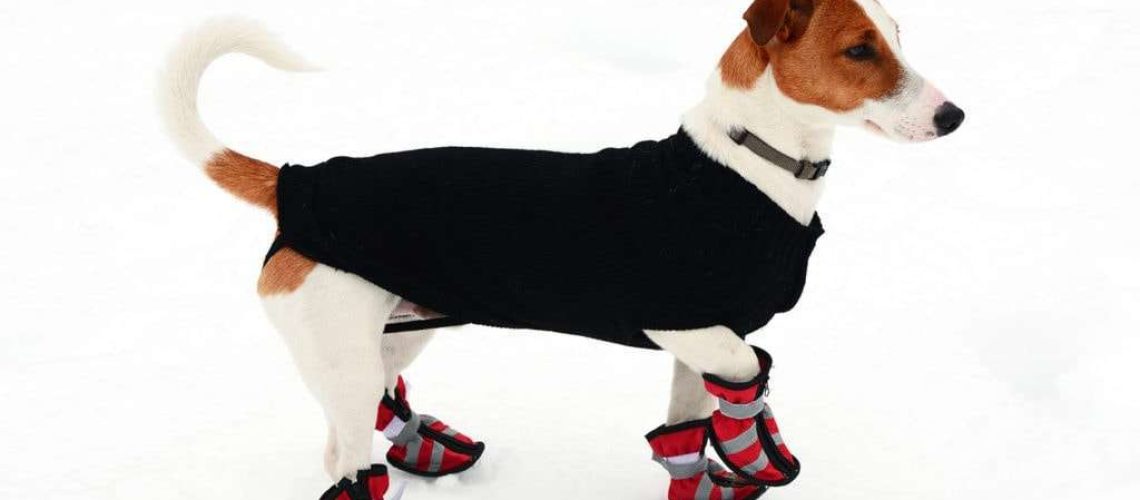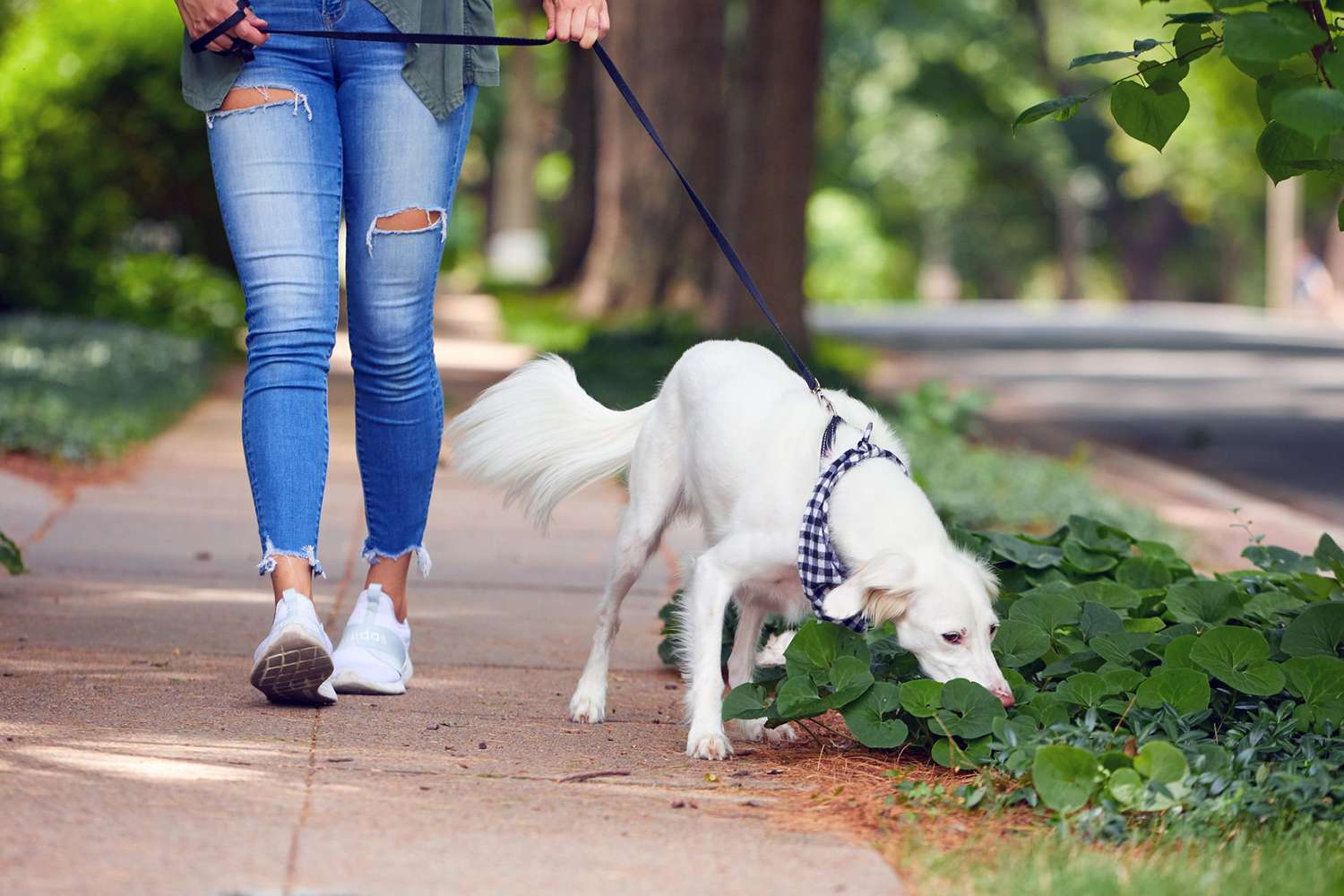Key Takeaways:
- Start by introducing your pup to the boots gradually, allowing them to sniff and investigate before putting them on.
- Use positive reinforcement techniques, such as treats and praise, to reward your pup for wearing the boots.
- Practice short sessions of walking or playing with the boots on to help your pup get used to the sensation.
- Ensure that the boots fit properly and are comfortable for your pup, adjusting or trying different sizes if necessary.
- Gradually increase the duration and intensity of activities while wearing the boots to build up your pup's tolerance and confidence.
Are you tired of watching your furry friend struggle with uncomfortable paws during walks? Do you want to protect their delicate feet from scorching hot pavement or freezing winter temperatures? Look no further! In this guide, we will explore the benefits of training your pup to wear dog boots and provide you with simple, effective techniques to make the process a breeze. By understanding how to properly introduce and acclimate your pup to these protective footwear, you can ensure their comfort, safety, and enjoyment during outdoor adventures. So, let's dive in and discover the secrets to happy paws and worry-free walks!
Why Your Pup Needs Dog Boots: Importance and Benefits
Dog boots are not just a fashion statement for your furry friend, they serve an important purpose. Just like humans, dogs can experience discomfort or injury when walking on certain surfaces. Dog boots provide protection for your pup's paws, shielding them from hot pavement, sharp objects, and harsh weather conditions. They can also prevent your dog from slipping on slippery surfaces.
Wearing dog boots can also be beneficial if your pup has sensitive paws or allergies. The boots act as a barrier between their paws and potential irritants, reducing the risk of itching, redness, or inflammation.
The Benefits of Dog Boots:
- Protection from hot pavement
- Prevention of injuries from sharp objects
- Traction on slippery surfaces
- Reduced risk of paw allergies or irritations
Hot Pavement Protection:
In the summer months, pavement can become scorching hot and cause painful burns on your dog's paw pads. Dog boots with thick soles provide insulation and protect against burns from hot surfaces.
Traction on Slippery Surfaces:
If you live in an area where it snows or rains frequently, sidewalks and roads can become icy or slippery. Dog boots with rubber soles offer better traction, preventing your pup from sliding and potentially getting injured.
Overcoming Challenges: Training Your Pup to Wear Dog Boots
While dog boots are beneficial for your pup's well-being, getting them used to wearing them can be a challenge. Dogs may initially resist wearing the boots due to the unfamiliar sensation on their paws. However, with patience and positive reinforcement, you can train your pup to accept and even enjoy wearing dog boots.
It's important to introduce the boots gradually and make the experience as positive as possible. Start by allowing your pup to sniff and investigate the boots before attempting to put them on. Reward your dog with treats or praise for showing interest in the boots. This will help create a positive association with the boots.
Tips for Training Your Pup to Wear Dog Boots:
- Introduce the boots gradually
- Use positive reinforcement such as treats or praise
- Make the experience enjoyable for your pup
- Start with short periods of wearing and gradually increase
Making the Experience Enjoyable:
To make wearing dog boots a positive experience, try associating it with something fun for your pup. For example, put on their favorite toy or engage in playtime while they wear the boots. This will distract them from any discomfort they may feel initially and create a positive association.
Gradually Increasing Boot-wearing Time:
Your pup may initially resist wearing the boots for extended periods. Start by having them wear the boots for short intervals indoors, gradually increasing the duration over time. This gradual approach will help your pup get used to wearing them without feeling overwhelmed.
Introducing Dog Boots to Your Pup: A Positive Approach
Why Use Dog Boots?
Dog boots can be a great addition to your pup's wardrobe, providing protection and comfort in various situations. Whether you live in an area with extreme weather conditions, rough terrains, or hot pavements, dog boots can shield your furry friend's paws from harm. They can also prevent injuries caused by sharp objects, chemicals, or allergens that may be present on the ground. Additionally, dog boots can help keep your home clean by reducing the amount of dirt and mud your pup tracks indoors.
Choosing the Right Dog Boots
When selecting dog boots for your pup, it's important to consider their size and specific needs. Measure your dog's paws accurately to ensure a proper fit. Look for boots made from durable materials that provide good traction and are easy to put on and take off. Some boots even have additional features like waterproofing or reflective strips for added safety during nighttime walks. Take into account the climate and terrain you'll be using the boots in to determine if you need ones with insulation or extra grip.
Tips for Introducing Dog Boots
1. Start by introducing the boots as a positive experience. Allow your pup to sniff and investigate them before attempting to put them on.
2. Gradually desensitize your dog to wearing the boots by initially putting them on for short periods of time indoors.
3. Use treats and praise to reward your pup when they tolerate wearing the boots without fussing or trying to remove them.
4. Practice walking around the house with the boots on before venturing outside.
5. Be patient and understanding if your dog initially resists wearing the boots – it may take some time for them to adjust.
Common Concerns About Dog Boots
1. Will the boots stay on? Look for boots with adjustable straps or closures to ensure a secure fit. It may take some trial and error to find the right boots that stay on your pup's paws.
2. Can my dog still feel the ground? Quality dog boots are designed to provide protection without sacrificing sensitivity. Your pup should still be able to feel the ground beneath them while wearing the boots.
3. Are dog boots only for small dogs? Dog boots come in various sizes, so they can be suitable for dogs of all sizes and breeds. Make sure to choose the appropriate size based on your dog's measurements.
Remember, introducing dog boots to your pup should be a positive experience. With patience, consistency, and plenty of rewards, your furry friend will soon become comfortable wearing their stylish new footwear.
Step-by-Step Guide: Training Your Pup to Wear Dog Boots
Coming soon! Stay tuned for our step-by-step guide on how to train your pup to wear dog boots comfortably and confidently. We'll cover everything from initial introductions to gradually increasing boot-wearing time and reinforcing positive behavior. Get ready to embark on this exciting journey with your furry companion!
Making Your Pup Comfortable: Gradually Increasing Boot-wearing Time
Start with Short Intervals
When introducing your pup to wearing boots, it's important to start with short intervals. Begin by putting the boots on for just a few minutes at a time and gradually increase the duration as your pup becomes more comfortable. This gradual approach will help prevent overwhelming your furry friend and allow them to adjust at their own pace.
Positive Reinforcement
To make the boot-wearing experience positive for your pup, use treats and praise as rewards. Whenever you put the boots on, give your pup a treat and shower them with praise. This positive reinforcement will create a happy association with wearing boots and encourage your pup to cooperate during future boot-wearing sessions.
Tips:
- Choose treats that your pup loves to make it extra rewarding.
- Be consistent with praise and rewards every time you put on the boots.
Tips and Tricks for Easier Dog Boot Training with Your Pup
Gradual Exposure to Different Surfaces
Dogs may feel uncomfortable when walking on certain surfaces while wearing boots. To help them adapt, gradually expose your pup to different surfaces such as grass, pavement, or sand. Start with familiar surfaces they are already comfortable walking on and then slowly introduce new ones over time. This step-by-step approach will help build their confidence in wearing boots across various terrains.
Proper Fit is Key
Ensuring that the boots fit properly is essential for your dog's comfort during training. Measure your dog's paws accurately before purchasing boots and choose a size that provides a snug fit without being too tight or loose. A well-fitting boot will stay securely in place without causing discomfort or hindering movement.
Tips:
- Measure your dog's paws when they are standing to get the most accurate measurements.
- Check the manufacturer's sizing guide for each specific brand of boots, as sizes may vary.
Reinforcing Positive Behavior: Making Dog Boot Wearing a Happy Experience for Your Pup
Take It Slow and Steady
When it comes to training your pup to wear boots, patience is key. Take it slow and allow your dog to adjust at their own pace. Rushing the process can lead to anxiety and resistance. Gradually increase the duration of boot-wearing sessions and provide plenty of positive reinforcement along the way.
Make it Fun with Playtime
Incorporate playtime into boot-wearing training sessions to make them more enjoyable for your pup. Engage in their favorite games or activities while they have the boots on. This will distract them from any initial discomfort and help them associate wearing boots with fun experiences.
Tips:
- Use toys or treats during playtime to keep your pup engaged.
- Keep training sessions short and end on a positive note to leave your pup wanting more.
By following these tips and tricks, you can gradually acclimate your pup to wearing boots, making it a comfortable and positive experience for both of you. Remember, consistency, patience, and positive reinforcement are key elements in successful dog boot training.
In conclusion, training your pup to wear dog boots is a gradual process that requires patience and positive reinforcement. By introducing the boots slowly, using treats and praise, your pup will eventually become comfortable wearing them and protect their paws during walks or outdoor activities.
When should dogs wear dog boots?
It is recommended to put dog boots on your furry friend during the winter season. These boots not only protect their paws from snow, ice, melting salt, and other debris but also prevent painful cuts and sores. However, not all dogs may be comfortable wearing boots, so it is important to ensure that the boots are the right size for your dog before putting them on.
Why won't my dog wear boots?
Certain dogs may be more particular about wearing boots, so they may not immediately accept them. If your dog gets scared or refuses to wear the shoes, it is important to be patient and go back to the previous step of the training. Keep rewarding positive behavior with treats and praise.
Do dogs like wearing dog boots?
"Dogs struggle to adjust to wearing boots because they add weight to their paws and limit their mobility. Despite this, some people insist on putting their dogs' paws into trendy boots. Sean reminds owners that dogs' paw pads are naturally resilient and can handle snow, ice, and frozen surfaces."
How long do you leave a dog's boots on?
It is not recommended to put shoes on your dog if their paws and ankles are wet, injured, or have any other medical conditions. Additionally, it is advised not to leave shoes on your dog for extended periods of time (over 5 hours) as the heat can cause discomfort and irritation.
Do vets recommend dog booties?
If your dog has difficulty walking, they may find vet-recommended orthopedic boots with extra grip and non-slip features beneficial. These boots can provide assistance to dogs with arthritis, hip dysplasia, and other conditions.
Should all dogs wear boots in winter?
Even the toughest dogs may need boots in certain conditions. Some cold-weather dog breeds like huskies are able to tolerate freezing temperatures without the need for boots to regulate their body temperature. However, there are instances when even these breeds, such as huskies and Akitas, may require foot protection.

















